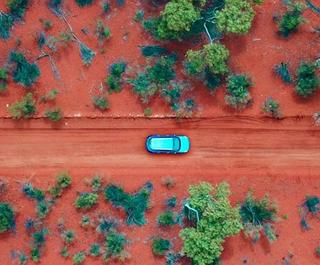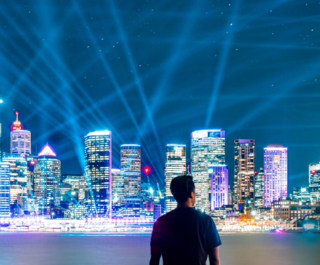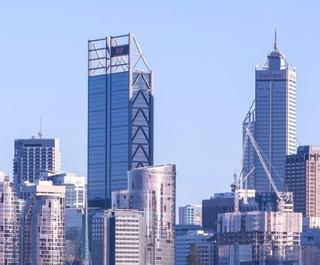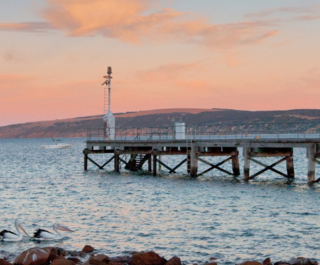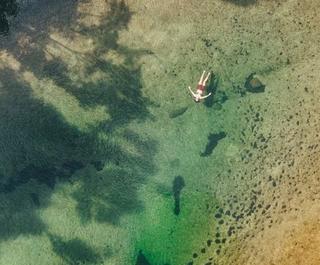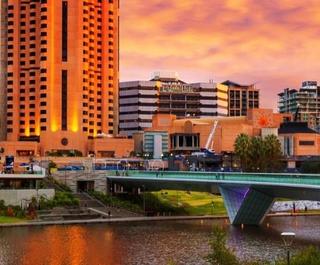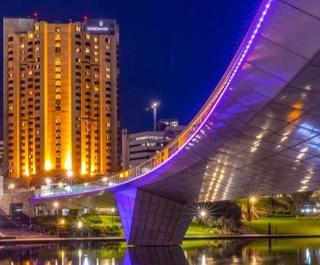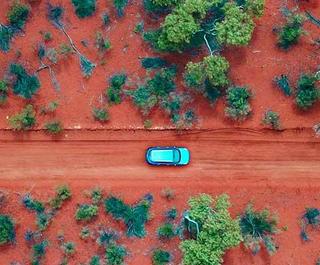
25 November 2019
Read Time: 3.7 mins
Arriving at Gladstone Airport, I step out onto the tarmac, the Queensland sun on my skin and fresh sea breeze filling my lungs. This is it, I’m so close to the Great Barrier Reef now – a whole underwater world is just a 20-minute flight away. Nervous excitement begins running through my veins. I walk out towards the helicopter and that’s when the butterflies hit.
Taking a helicopter to the reef, the view from the air is absolutely stunning. Flying over coral reefs with the ocean below glistening in 50 shades of blue, green and turquoise makes you realise flying is definitely a ‘wow’ way to arrive at Heron Island located in the southern Great Barrier Reef. I even spotted a whale who was a little slow on her southern migration – such a magical experience.
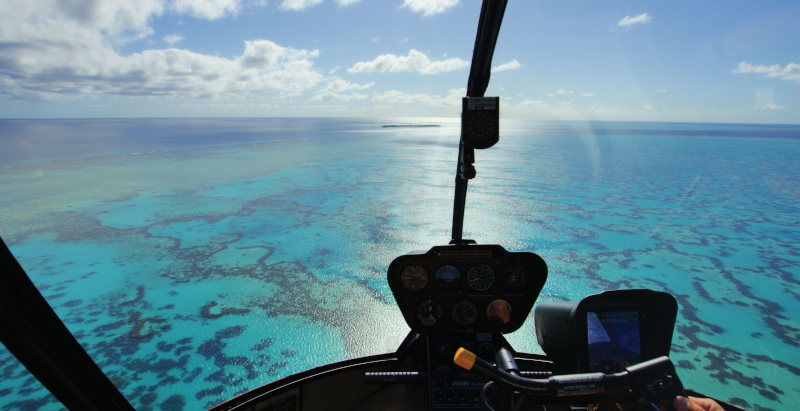 An aerial view from the helicopter over the Great Barrier Reef
An aerial view from the helicopter over the Great Barrier ReefOn Heron Island, I feel an immediate sense of familiarity. An intimate resort on an coral cay surrounded by reef, Heron Island is one of the few islands with direct access to the Great Barrier Reef. Not only is it easy to get around on foot, but the whole guest experience is really seamless. I sign up for all the reef activities and have my first dive that afternoon.
For divers, Heron Island’s main appeal is its close proximity to the bommies, worldclass diving sites right there on the island’s doorstep. I was really impressed that within a three-minute boat ride we were at the first dive spot. I have dived many sites around the world before, but none have been as easily accessible.
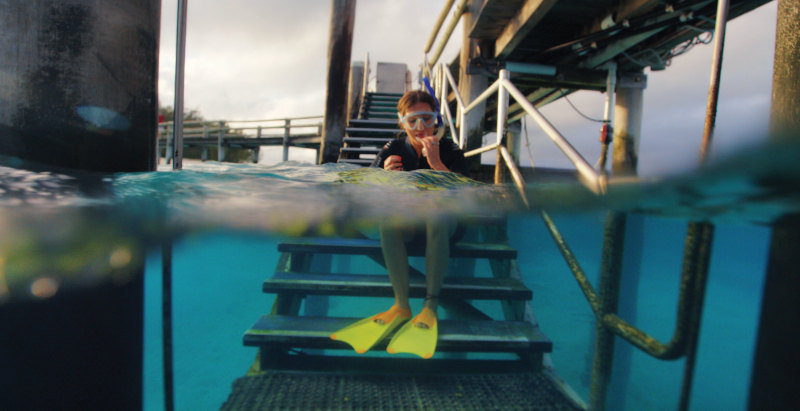 Getting ready to snorkel and dive the reef.
Getting ready to snorkel and dive the reef. Under the water, it’s a whole new world. The diversity of marine life and the colours of the reef and its inhabitants are astounding. On my first dive I swam amid hundreds of reef fish, multiple species of rays and a sea floor dotted with coral in many shades and colours. On each dive I discovered different species and even saw a reef shark at a site called ‘Hole in the Wall’.
Diving with multiple turtles at the same time was a really special moment for me. Heron Island is a breeding ground for two threatened species of sea turtle (green and loggerhead) and turtle sightings are common on dives off the island. I would love to return during hatching season (from early January) and see these beautiful creatures make their way from the sand to the sea.
That’s what makes this place so magical – you don’t have to leave the island or be a world-class diver to encounter myriad species of wildlife. I walk around the island and admire all kinds of birds, while rays and sharks rest in the sandy shallows of the water. At night, I’d often see a turtle head pop up while sitting outside at the bar enjoying a sunset drink. It’s a place like no other.
One morning I woke early and went snorkelling off the jetty and within seconds, I saw more marine life than anywhere I’ve snorkelled before. The channel was teeming with rays, sharks, turtles and tropical fish as well as sea cucumbers, starfish and healthy coral.
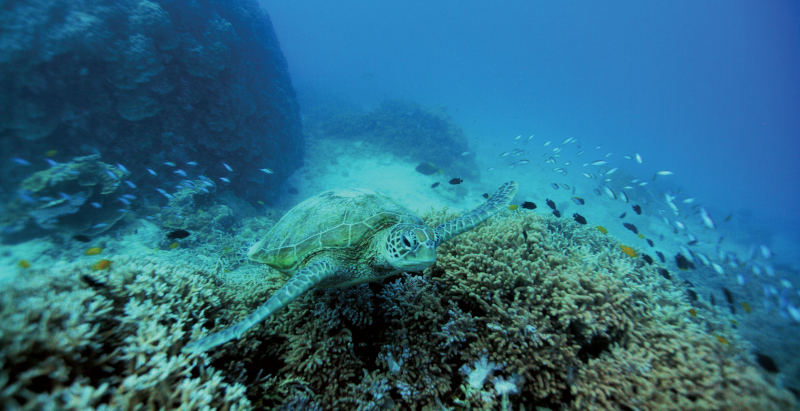 A marine wonderland in our own backyard.
A marine wonderland in our own backyard. I head out towards the Heron Island wreck and the activity of the underwater world continued. The close proximity to the reef makes Heron Island a perfect base for snorkelling or diving, but the beauty of this spot is you don’t need to be a diver to enjoy these magical marine encounters.
To some the ocean is a deep mysterious world, but as a self-confessed water baby, it’s where I feel at home – it’s my happy place. To be able to dive the Great Barrier Reef every morning and night and encounter green and loggerhead turtles, starfish, rays, sharks and tropical fish was certainly an unforgettable experience I’ll cherish.


